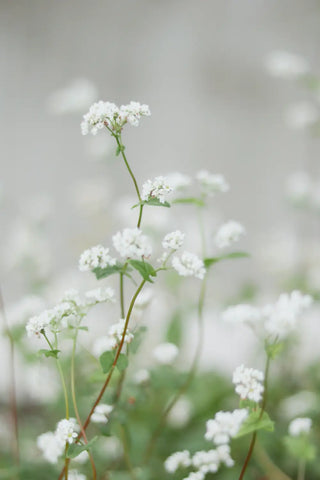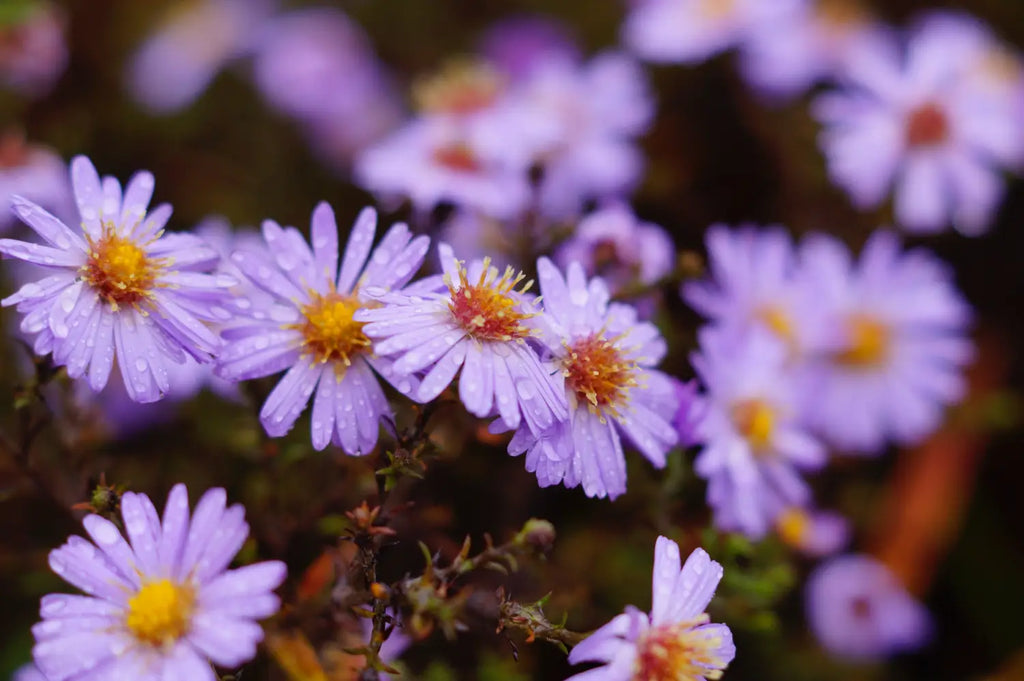More Flora Means More Fauna and a Bit Less Lawn(a)
As gardeners, we’re no strangers to the plea for pollinator friendly plantings. Thousands of crops we depend on for food or medicinal properties rely heavily on animal and insect pollination. But there’s more to it than just nectar bearing blooms.
The land on which we live belongs more to mother nature than it ever will to us.
Growing native plants is a beautiful and impactful way to honor the local ecosystem by giving back to the land exactly what it needs.
What does ‘native’ really mean?

Growing native means choosing plant species that have evolved to suit a particular region over thousands of years - yours! These flowers, grasses, trees, bushes, and shrubs have developed alongside their local pollinators and together, continually adapt to meet the needs of an ever changing climate, shifting soil composition and wildlife habitat.
It also means designing a landscape rich in local biodiversity. Native species are interdependent; they rely on one another while each playing a significant role in the health of the environment. From the microorganisms in the soil to the falcon soaring above, biodiversity is essential for a functioning ecosystem. And the loss of it, through pollution, climate change and habitat destruction, remains one of the biggest threats to our planet.
But growing native can help!
Native flowers and plants improve their local habitat from the sky down to the soil. All plants absorb carbon dioxide from the air, but native plants tend to have deeper and more intricate root systems (especially when compared to turf lawns), allowing them to collect a lot more CO2. Those deeper roots help stabilize the soil and aid in preventing erosion by absorbing excess ground water too. You won’t need to water your native yard the way you water your lawns.
Overall, native species are pretty low maintenance. They already know your summers get hot, your winters are long, your soil is loamy, dense or composed of heavy clay. They’re accustomed to the dampness of the Pacific Northwest, the harsh winds off the coast of Maine or the exhausting humidity of the Southeast. They’re meant to fit in right where you are!
Provided you’ve done the groundwork😎
When first transitioning your yard to a native habitat, your soil may need a bit of TLC. Our societal push for flashy, decorative landscapes and homogenous green lawns has left most of our backyards depleted of essential nutrients. A bit of soil turnover, attentive watering and light clipping as your seeds and plants establish should do the trick.
Please note, it is important you localize any advice: speak with gardeners at local nurseries, research your zip code or hardiness zone, and reach out to your local Cooperative Extension to set yourself up for success!
Are all Wildflowers native?
Not quite. In order to be 'wild’ a flower must simply grow on its own in natural landscapes - like bright sunny meadows, heavy wooded areas, seashores and marshlands. Seed mixes, like our North American Wildflower Mix, are often a collection of native and naturalized varieties.
A plant that is naturalized is one that reproduces without human assistance but is not historically native to the area in which it grows. Most are neutral in how they interact with their non-native home. Some have adapted and continue to provide nectar and ecological benefits to the environment in which they grow.
But just because it’s thriving, doesn’t mean it’s vibing…
Naturalized plants can become invasive! That means they can spread rapidly and crowd out native species, reducing biodiversity and eliminating food sources for the creatures in your local habitat. They do not have naturally occurring control systems in place the way native species do. Some invasive plants have aggressive root systems that can smother other roots and corrupt soil quality. As they overcome the landscape, pollinators and other wildlife will struggle to find the resources they need to survive and may abandon the area.
Don’t fret! There are lots of good resources out there for discovering what’s truly native to your local area:
- A Native Plant Finder brought to you by the National Wildlife Federation
- The Audubon Society: Enter your zip code to find native plants for local birds
- Download our Pollinator Guide for info on buzz-friendly growing
- Your local nursery or gardening center
- And, of course, your local Cooperative Extension Service!
Pollinators need our help. Years of industrial development, ongoing pollution and negligence have left their populations unstable and many are in dramatic decline. But there is hope for Mother Nature is nothing if not resilient.
We can choose today to start growing native wildflowers, grasses and plants in our own backyards and become better stewards of the natural environments in which we live. Even a few seeds can make the world of a difference.



It would be great to have clear native species identification For flowers, herbs, ground cover, and anything else where it’s appropriate in the catalog, and offer seed mix that is native only, not naturalized. Thx
Love your blog and the seeds I get from you. We started a bee and pollinator garden this year and can’t wait to see things start to bloom. BTW, check spelling for Audubon Society.